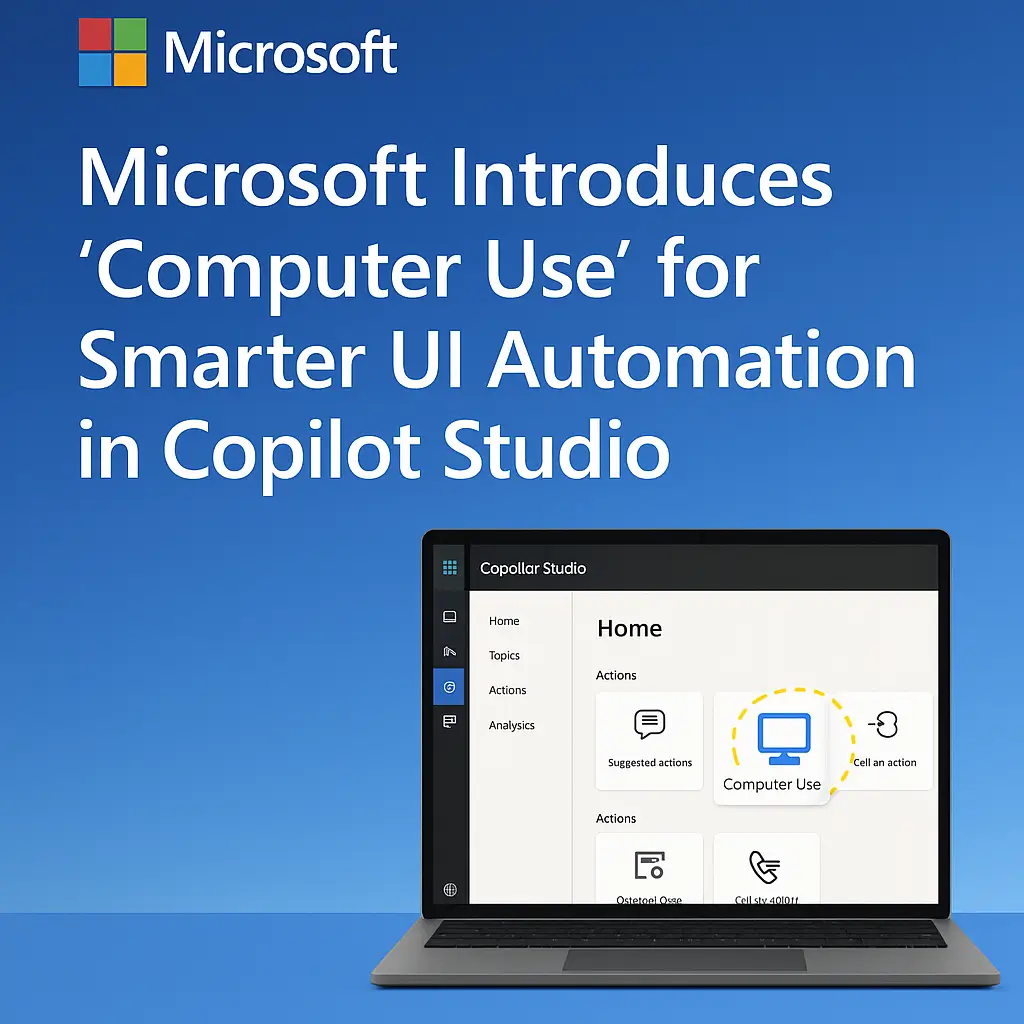Microsoft has been pushing the boundaries of artificial intelligence innovation, with Copilot Studio becoming one of its most ambitious platforms. Recently, Microsoft announced a groundbreaking feature called “computer use” for Copilot Studio, introducing early access to agents capable of interacting directly with websites and desktop applications through their graphical user interfaces (GUIs). However, while the platform is advancing technically, it’s also experiencing a strategic shift that has left some of its original power users feeling disconnected.

Transforming Automation with Computer Use
The introduction of the computer use capability marks a major leap for Microsoft Copilot Studio. Traditionally, automating tasks required APIs or direct integrations, but with this new feature, agents can now perform actions like clicking buttons, selecting menus, and typing into fields—essentially doing anything a human user could do on an app or a website.
What makes this innovation particularly powerful is its adaptability. The system intelligently responds to changes in the user interface, ensuring that automation continues smoothly even if elements on a page move or change. Built-in reasoning allows the agent to troubleshoot on the fly, minimizing downtime and reducing the need for manual intervention.
Moreover, the security and compliance measures align with organizational and industry standards, as data remains within Microsoft Cloud boundaries and isn’t used for training external models. This results in faster deployment, lower maintenance, and reduced infrastructure costs for businesses.
Key Use Cases highlighted by Microsoft include:
- Automated data entry across disconnected systems.
- Market research by gathering data from multiple online sources.
- Invoice processing to streamline financial workflows.
This development also significantly enhances traditional robotic process automation (RPA) by making it more resilient, easier to use (with natural language instructions instead of coding), and fully visible through historical logs and reasoning steps.
Copilot’s Audience Shift: From Power Users to Mass Adoption
While Copilot Studio grows technically, the broader Copilot service has undergone a major strategic repositioning. Originally launched as Bing Chat in 2023, Copilot was once a favorite among tech enthusiasts and developers. It offered features like plugin support, conversation style selection, and deep system control on Windows, making it a versatile and powerful tool.
However, over time, Microsoft’s strategy shifted toward making Copilot more accessible to the general public. Features that appealed mainly to tech-savvy users were either removed or de-emphasized. The goal became clear: position Copilot as a friendly, simple AI companion for everyday users rather than a specialized tool for experts.
This move has caused some discontent among the AI community and former power users. Many of them now prefer alternatives like ChatGPT or other AI platforms that still offer greater customization, extensibility, and complexity for advanced use cases.
Microsoft seems to be betting that while seasoned AI users might drift away, a larger audience—those who find AI intimidating—could adopt Copilot if it remains simple and intuitive enough.
Looking Ahead: Balancing Innovation and Accessibility
Microsoft’s Copilot Studio is a testament to how AI can be deeply integrated into business processes without requiring complex setups or API dependencies. The computer use functionality could revolutionize how companies approach automation, making it more intelligent, resilient, and user-friendly.
At the same time, Microsoft’s broader Copilot vision reflects a classic technology dilemma: balancing the needs of expert users against the goal of mass adoption. By simplifying Copilot, Microsoft opens the door to millions of new users, but risks alienating its earliest adopters in the process.
The future of Copilot will depend on how well Microsoft can continue innovating for businesses while making the personal Copilot experience engaging enough for everyday users—without diluting the power that made it attractive in the first place.
One thing is certain: Copilot is evolving, and the world is watching closely.